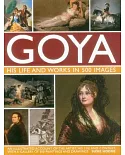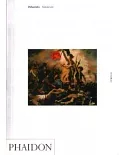Focusing on images of or produced by well-to-do nineteenth-century European women, this volume explores genteel femininity as resistant to easy codification vis-Ã -vis the public.
Attending to various iterations of the public as space, sphere and discourse, sixteen essays challenge the false binary construct that has held the public as the sole preserve of prosperous
men. By contrast, the essays collected in Women, Femininity and Public Space in European Visual Culture, 1789-1914 demonstrate that definitions of both femininity and the public were mutually
defining and constantly shifting. In examining the relationship between affluent women, femininity and the public, the essays gathered here consider works by an array of artists that includes
canonical ones such as Mary Cassatt and François Gérard as well as understudied women artists including Louise Abbéma and Broncia Koller. The essays also consider works in a range of media
from fashion prints and paintings to private journals and architectural designs, facilitating an analysis of femininity in public across the cultural production of the period. Various European
centers, including Madrid, Florence, Paris, Brittany, Berlin and London, emerge as crucial sites of production for genteel femininity, providing a long-overdue rethinking of modern femininity
in the public sphere.





















